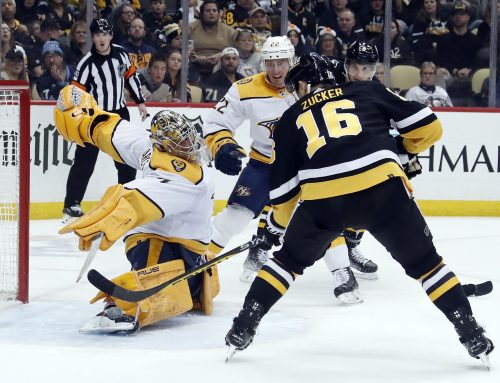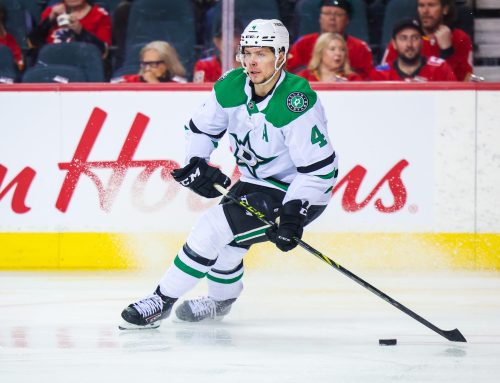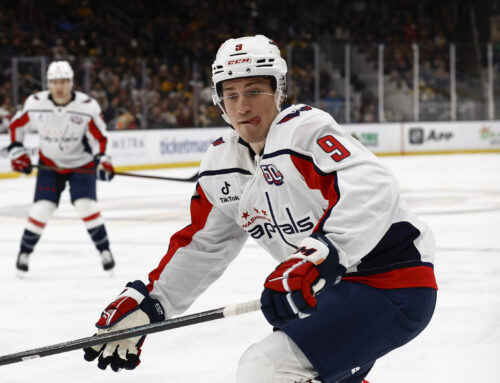
This week's Capped covers some similarities between the first quarter of last year’s season, and this year’s.
****
Happy American Thanksgiving to those South of the border. To my Canadian brethren, and every other non-American, happy Thursday.
Did you know that in the salary cap era, if your NHL team is in the playoffs after games finish tonight, you’re 74% likely to watch them play at least one playoff series? Well, based on the stats since the cap was implemented, that has been the case.
It is surprising to see the majority of the cup winners from the last number of years toiling closer to the basement than anything. Pittsburgh, Chicago, and Los Angeles are struggling, while Vancouver, Buffalo, and the New York squads are much higher in the standings than many (including yours truly) expected.
If we stick with three-quarter mark of how many teams keep their playoff spot, my guess is that the New York duo, Vancouver, and Calgary drop out, with Anaheim, Arizona, Washington, and Carolina rising to take their places.
This is the beauty of the salary cap era. Parity, variety, and completely unpredictable seasons. All of this has to be understood to win in a salary cap era, whether it is in fantasy or in the real show.
****
In the fantasy game, how then do we deal with the parity, and how do we approach the American Thanksgiving benchmark for players?
Last season at American Thanksgiving, Steven Stamkos was your scoring leader, Jaden Schwartz was fourth (30 points in 22 games), Vladislav Namestnikov was scoring at a point-per-game clip, while Claude Giroux and Evgeni Malkin were chugging along, about to burst, scoring 80 and 78 points respectively in the last three-quarters of the season.
Let’s draw some comparisons to last year:
2017: Steven Stamkos and Nikita Kucherov
2018: Nathan MacKinnon and Mikko Rantanen
In 2017, we saw a power duo take over the first quarter – one of which was an already established superstar, while the other was just scratching the surface. If you owned both, you were probably running away with your league. If you owned one, you were probably still doing very well. Sound at all like this year? It’s almost the exact same, except this year’s feature duo has a third member that will be there for the whole season. Instead of being shipped out like Namestnikov was last year, the Colorado captain, and top line left-winger Gabriel Landeskog, is here to stay. That kind of consistency will go a long way towards keeping the offence flowing. However, seeing Rantanen and MacKinnon finish between 90-95 points is still much more likely than the 120-point pace they are currently on. Stamkos and Kucherov averaged out to 93 points last season, so a similar benchmark for the Avalanche duo makes a lot of sense. That means about 70 points each over the remainder of the season, or seven points every six games. Considering the team-friendly cap hits these two are on, there is no sense in even trying to sell high.
2017: St. Louis Forwards
2018: St. Louis Forwards
In 2017, we saw a trio of St. Louis forwards blast out of the gate, only to regress back to their normal for the second half. Jaden Schwartz, Vladimir Tarasenko, and Brayden Schenn were all scoring at more than a one-hundred-point pace. Selling high at this point in time would have been perfect, less so for Tarasenko, who is one of the best goal-scorers in the league, but Schenn and Schwartz would have netted you a star player in return. Perhaps even a name as big as Malkin if you could fit the salary in. All three tailed off after the first quarter, leaving fantasy owners trying to fill in the loss of production. With the new head coach in, O’Reilly may get shuffled around the lineup. This could be an even more severe regression back to the normal (60-point pace), due to the additional circumstances. At his cap hit of $7.5 million, he’s a big sell high, just like the St. Louis forwards were last year.
While we’re on the topic of the Blues, this is about the lowest you may be able to buy Jake Allen. He’s looking like a corner is being turned, having only allowed one goal in three of his last four starts. With a new coach, it can’t get worse, so it’s worth the try, as goaltending is so unpredictable. His contract is also one of the cheaper ones you could find for an NHL starter.
2017: Alex Pietrangelo and John Klingberg
2018: Morgan Rielly and Thomas Chabot
In 2017, we saw one proven rearguard take another offensive step forward, while a young skilled player dazzled with even more offensive talent than we were expecting. Fast forward a year, and we’re in the exact same spot. Rielly has continued to grow his game, and with the added shooting volume along with a powerplay boost, he has become a top fantasy own. Chabot meanwhile has jumped right into the spotlight, but his numbers are heavily inflated by secondary assists, and has been mentioned in articles quite often recently, capped off by the Geek of the Week Column on Sunday. There is no higher that Chabot’s value could be perceived, so he is a sell very high. You should be getting value equivalent to that of a point-per-game defenceman on a good contract, but go for something with a little more consistency.
Morgan Rielly’s contract is also turning into a massive bargain, and if he can keep his new shot rate up (almost three per game), there is no selling him right now. The one scenario I could see making sense in a cap league, is if a manager was getting desperate due to Klingberg’s recent injury, and was offering Klingberg plus an incentive. However, as we learned with Pietrangelo, if you lose the powerplay time to the young guy starting off the next year, your value can plummet. Rielly owners, keep an eye on Liljegren, as he could take a large chunk of Rielly’s value next October.
2017: Struggling Tuukka Rask
2018: Struggling Tuukka Rask
Through the first quarter of the season in 2017, Rask had three wins, a GAA of 2.89, and a save percentage below .900%. He finished with 34 wins, a GAA of 2.36, and a save percentage of 0.917%. This year, on a relatively unchanged Bruins team, his start to the season has been poor, but not as bad as last year. He has been one of the most consistent goalies over the last handful of years, and is worth the $7 million cap hit if you can get him at a discounted trade price right now. Netminders are notoriously hard to trade for. Make your life a little easier by buying low here while you can.
****
I know that I didn’t have the Pittsburgh Penguins as one of the teams coming back to make the playoffs, but you can never count out their high-octane offence. Expect big pushes from Sidney Crosby, Phil Kessel, and the aforementioned Malkin.
****
Previous Capped articles:
Looking Ahead to the 2019 UFA Class
Extensions for Rinne and Gourde
****
All cap related info is courtesy of Capfriendly.
That caps off this week’s article, thanks for reading. As always, you can find me on twitter @alexdmaclean.





 MTL
MTL
 EDM
EDM CAR
CAR TOR
TOR PHI
PHI VAN
VAN NSH
NSH
